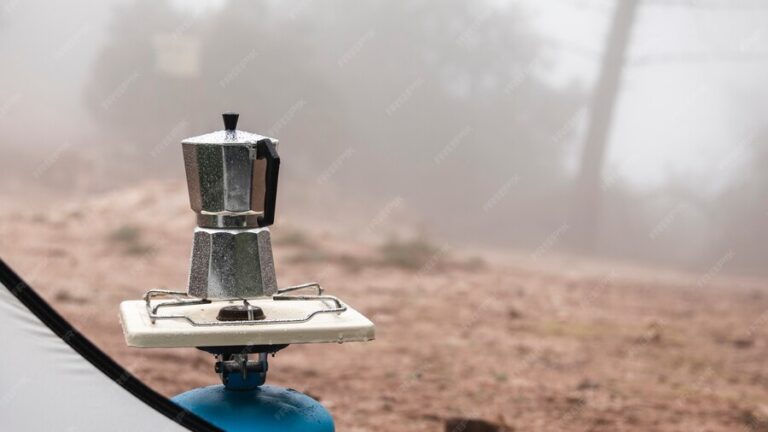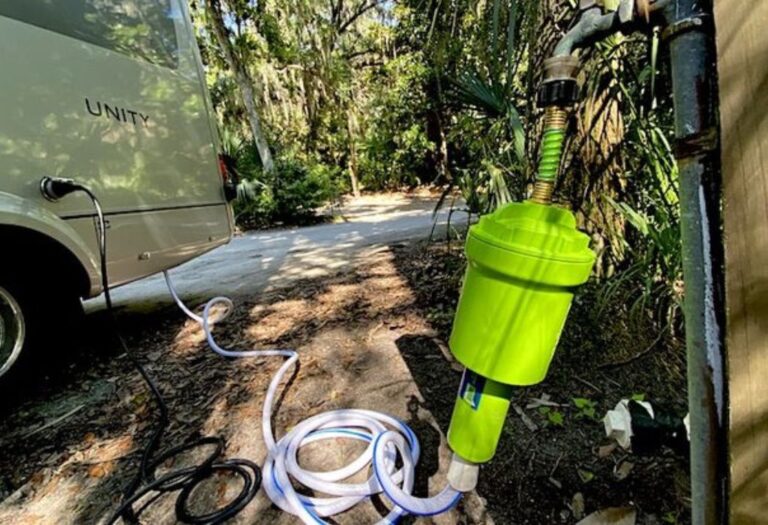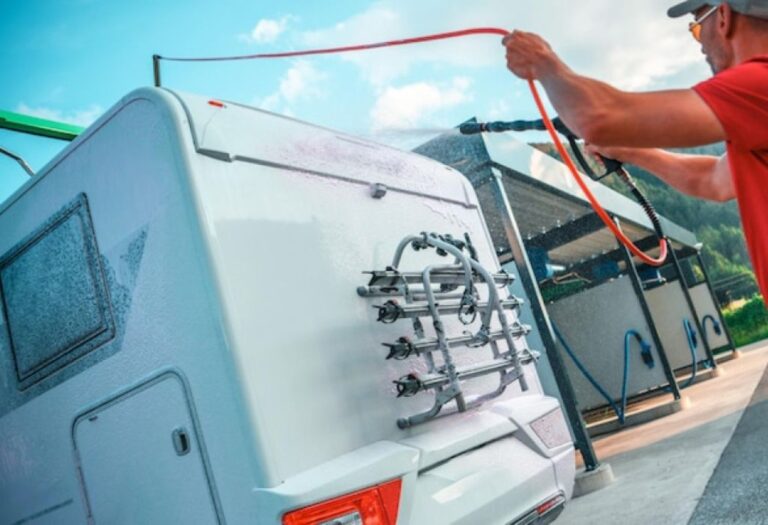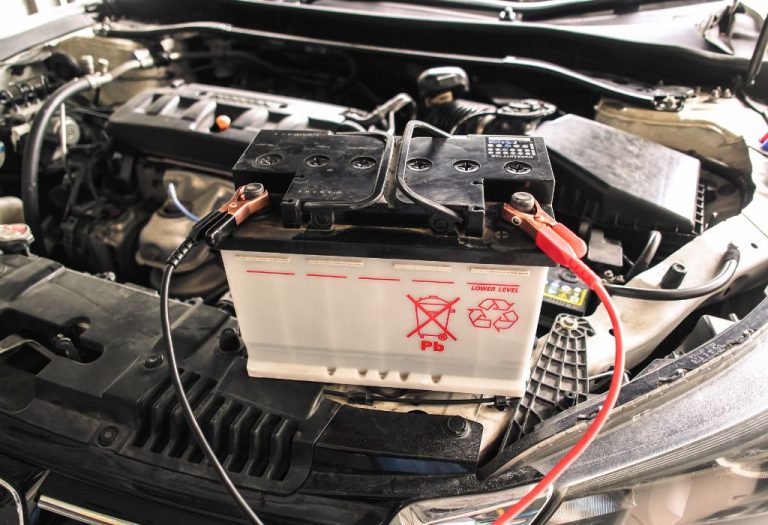How to Prime a Shurflo RV Water Pump Easily
Imagine setting up camp after a long drive, turning on the faucet in your RV, and hearing nothing but air sputtering out.
The frustration of realizing your water pump isn’t delivering water is a common headache for RV owners.
Fortunately, the fix often comes down to one simple but essential task — knowing how to prime a Shurflo RV water pump correctly. A Shurflo pump is designed to be self-priming, but trapped air, a loose fitting, or a mis-set valve can quickly stop it from pulling water.
According to RVshare, nearly 70% of water system issues in RVs stem from airlocks or improper setup during priming (source). Air pockets prevent the pump from building suction, causing it to run dry and overheat.
The good news is that priming your pump is quick once you understand how it works. In this detailed guide, you’ll learn the exact steps to prime your Shurflo RV water pump, troubleshoot common problems, and restore steady water pressure for your next adventure.
Understanding Your Shurflo RV Water Pump
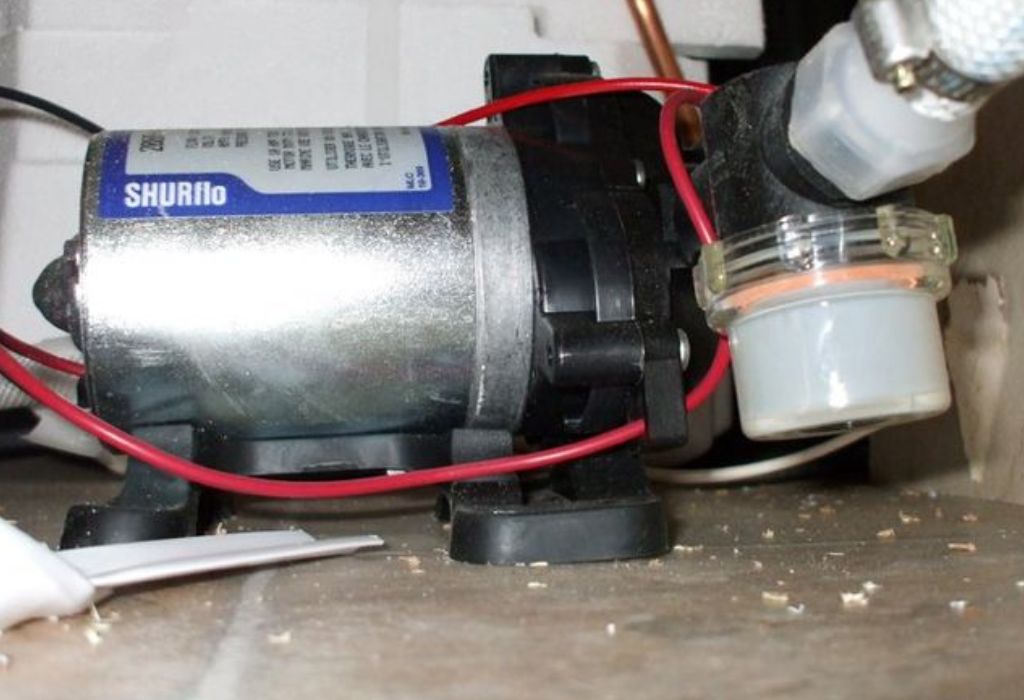
How a Shurflo Pump Works
A Shurflo RV water pump is a self-priming diaphragm pump that uses check valves to create suction. When the pump runs, the diaphragm draws water in through the inlet line and pushes it toward your faucets under pressure.
However, when air enters the system — often after de-winterizing or replacing plumbing parts — the diaphragm loses suction. This trapped air prevents the pump from drawing water from the freshwater tank, leaving your system dry and noisy.
Why Priming Is Necessary
Even though Shurflo pumps can dry-prime up to 6 feet, they still need water in the inlet line to begin suction. If air fills the hoses, the pump’s one-way valves can’t hold pressure, making it impossible to move water.
Priming ensures all air pockets are expelled, the suction line is filled, and water can flow smoothly. It’s one of the simplest yet most important RV maintenance steps.
Main Components That Affect Priming
- Freshwater tank — supplies water to the pump.
- Inlet strainer — filters debris before it enters the pump.
- Suction hose — connects the tank to the pump inlet.
- Outlet hose — delivers water to faucets.
- Bypass/winterizing valve — allows antifreeze input and can block flow if left open.
Q&A Section
Do Shurflo pumps prime automatically?
Yes, but they require a sealed suction line. If air leaks exist, manual priming is needed.
Can I damage my pump by running it dry?
Briefly, no. But extended dry runs can overheat and wear out diaphragms.
What causes a pump to lose prime?
Air leaks, empty tanks, blocked filters, or open bypass valves.
Preparing to Prime the Pump
Step 1: Gather the Right Tools
Before learning how to prime a Shurflo RV water pump, collect these essentials:
- Fresh water supply (tank filled).
- Screwdriver or wrench (to loosen fittings).
- Clean towel or rag.
- Transparent hose (optional for wet priming).
- Flashlight for inspecting leaks.
Having everything nearby helps you complete the process without running back and forth.
Step 2: Check Your Valve Positions
Most RVs have a winterizing or bypass valve near the pump. Make sure it’s turned toward the tank, not the external suction hose.
If the valve remains open, air will keep entering, preventing suction. Also, confirm your water heater bypass is correctly positioned to avoid sending air through the heater instead of water.
Step 3: Inspect for Air Leaks or Blockages
Look closely at the inlet strainer attached to your pump. A loose cap, cracked housing, or damaged O-ring can cause suction leaks that prevent priming.
Remove the strainer bowl, rinse it under clean water, and reattach it tightly. Ensure all clamps on the suction line are secure. Even a tiny air gap can break suction.
Q&A Section
Where is the Shurflo inlet strainer located?
It’s usually on the pump’s inlet side — a clear plastic bowl that catches debris.
Do I need to remove the strainer to prime?
No, just ensure it’s clean and sealed.
What if my pump keeps pulling air?
Check every fitting from the tank to the pump for cracks or loose connections.
Step-by-Step: How to Prime a Shurflo RV Water Pump
Step 1: Fill the Freshwater Tank
Make sure your freshwater tank is at least half full. If it’s nearly empty, the pump will pull air instead of water.
Close all faucets in the RV to allow pressure buildup once the pump begins drawing water.
Step 2: Open the Nearest Cold Faucet
Turn on the cold water tap closest to your pump. This allows trapped air to escape once suction starts.
Leave the faucet open throughout the priming process — you’ll hear air sputter, then see water flow when the system primes successfully.
Step 3: Turn On the Pump Power
Switch on your water pump using the interior control panel. Let it run for 30–60 seconds. You should hear it hum and begin cycling.
If water doesn’t flow after one minute, turn it off and proceed to wet priming.
Step 4: Wet Prime the Pump (if needed)
If dry priming fails, disconnect the inlet hose from the pump. Using a small funnel, pour clean water directly into the inlet port until it’s full.
Reconnect the hose tightly and turn the pump back on. This gives the diaphragm enough water to create suction and pull fluid from the tank.
Step 5: Bleed Air from All Faucets
Once the nearest faucet runs steadily, open additional cold and hot taps. This allows remaining air pockets to escape from the system.
Continue until water flows smoothly from every outlet, then close all faucets.
Step 6: Inspect for Leaks
After successful priming, check under your sink, around fittings, and near the pump for drips. Even a small leak can cause the pump to cycle unnecessarily.
Q&A Section
How long does priming take?
Usually under two minutes if valves and hoses are correct.
What if no water comes out?
You may have an air leak, blocked line, or open winterize valve.
Is wet priming safe for the pump?
Yes — adding water helps start suction safely without damaging seals.
Do I need to open all faucets?
Eventually, yes. Start with one, then open others to release all air.
Troubleshooting Common Priming Issues
Pump Runs but No Water Flow
If the pump is running but no water comes out, check these first:
- Ensure the tank outlet valve is open.
- Verify there’s water in the tank.
- Inspect the suction line for kinks or clogs.
You can also attach a short clear hose directly to the pump inlet and submerge the other end in a bucket of water. If the pump primes from the bucket, your tank or line is the problem.
Pump Cycles On and Off Rapidly
This usually means there’s an air leak or low pressure. Tighten all hose clamps and inspect fittings on both the suction and discharge sides.
If air is leaking back into the pump, it will lose prime repeatedly even after working once.
Water Spits and Sputters
Air bubbles in your plumbing system can cause inconsistent water flow. Keep all faucets open until steady flow appears. Sometimes it takes multiple cycles for trapped air to clear completely.
Q&A Section
Why does my pump lose prime overnight?
A small suction leak or faulty check valve may let air back in after shutdown.
Can a clogged strainer stop water flow?
Absolutely — debris in the filter can completely block suction.
Is it normal for the pump to cycle occasionally?
If all faucets are closed, cycling indicates a small leak somewhere in the system.
Priming After Winterization
Flushing Antifreeze and Air
When RVs are winterized, pink antifreeze fills the lines to prevent freezing. Before priming, flush all antifreeze out by filling the freshwater tank with clean water and opening faucets until the liquid runs clear.
Set the winterizing valve back to the “tank” position — leaving it on “siphon” will prevent priming entirely.
Bypass and Water Heater Checks
Ensure your water heater bypass valves are correctly aligned. If air remains trapped in the heater, it will delay water pressure.
Open both cold and hot faucets during priming to allow the heater to fill completely.
Q&A Section
Can I prime with antifreeze still in lines?
No — flush it first to avoid contamination and sticky residue.
Why won’t my pump prime after winter storage?
Air leaks, mis-set valves, or dried seals are the main causes.
Should I remove the filter during priming?
Yes, temporarily bypass or remove cartridge filters to reduce resistance.
Using City Water vs Fresh Tank
Understanding the Difference
When hooked to city water, your plumbing is pressurized externally — the pump is bypassed. So, city water won’t help prime your pump because suction must come from the tank.
If you want to test the system with city water, do it after priming to check for leaks under pressure.
Switching Between Modes
Always turn off the pump when connected to city water. When you disconnect, return the selector valve to “tank fill” and prime if needed.
Q&A Section
Why does city water work but the pump doesn’t?
Because city water bypasses the suction side; your pump likely has an air leak.
Can I use city water to assist priming?
No — it doesn’t pressurize the suction line.
Maintenance Tips to Prevent Priming Problems
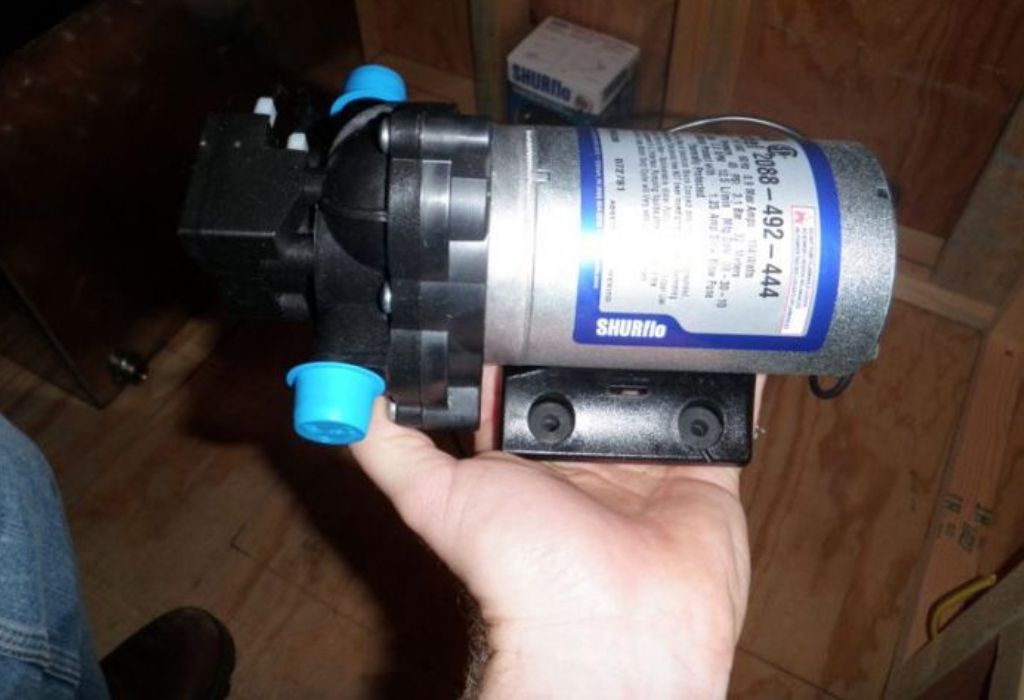
Clean the Inlet Strainer Regularly
Rinse the strainer every few weeks to remove debris or algae buildup. Replace damaged O-rings immediately to maintain airtight seals.
Inspect Hoses and Fittings Each Season
Cracked or brittle hoses on the suction side are common air-leak culprits. Use reinforced RV-grade hoses for replacements.
Avoid Running the Pump Dry
Even though Shurflo models can tolerate brief dry operation, running them without water repeatedly causes internal wear.
Flush and Sanitize Twice a Year
Follow Shurflo’s recommendation to sanitize your water system at least every six months (source).
Q&A Section
How often should I check fittings?
Inspect before and after every long trip.
Can I leave water in the tank during storage?
No — drain it to prevent mold and odor buildup.
Should I lubricate O-rings?
Yes, apply food-grade silicone grease to prevent drying or cracking.
Quick Reference: Priming Checklist
- Freshwater tank at least half full.
- Bypass valve set to “tank.”
- Inlet strainer clean and sealed.
- All hose clamps tightened.
- Pump powered on for 30–60 seconds.
- Open nearest faucet to release air.
- If no flow, wet-prime through inlet port.
- Bleed all faucets until steady water flows.
Q&A Section
How will I know it’s fully primed?
You’ll see steady water flow and the pump will stop cycling.
Can I use an external hand pump to prime?
Optional — useful if the system is completely dry.
Should I hear air sputter?
Yes, a short sputter followed by steady flow means air is clearing.
Conclusion
Learning how to prime a Shurflo RV water pump is an essential skill that saves time, frustration, and costly repairs. Whether you’ve just de-winterized, replaced plumbing, or noticed low pressure, priming restores the system’s suction and ensures reliable water flow.
Always start with the basics — check valve positions, clean the inlet strainer, and make sure your freshwater tank is filled. Wet-prime the pump if needed, bleed all faucets, and inspect for air leaks.
With regular maintenance, tight fittings, and seasonal cleaning, your Shurflo RV pump will deliver steady water pressure every time you hit the road — keeping showers refreshing and your RV adventures worry-free.
I’m David R. Coleman, the founder, lead writer, and lifelong tool enthusiast behind GarageToolPro.com. With years of experience in automotive repair, woodworking, and home DIY projects, I created this platform to share practical tips, detailed tool reviews, and step-by-step guides that help mechanics, hobbyists, and homeowners get the job done right the first time.

